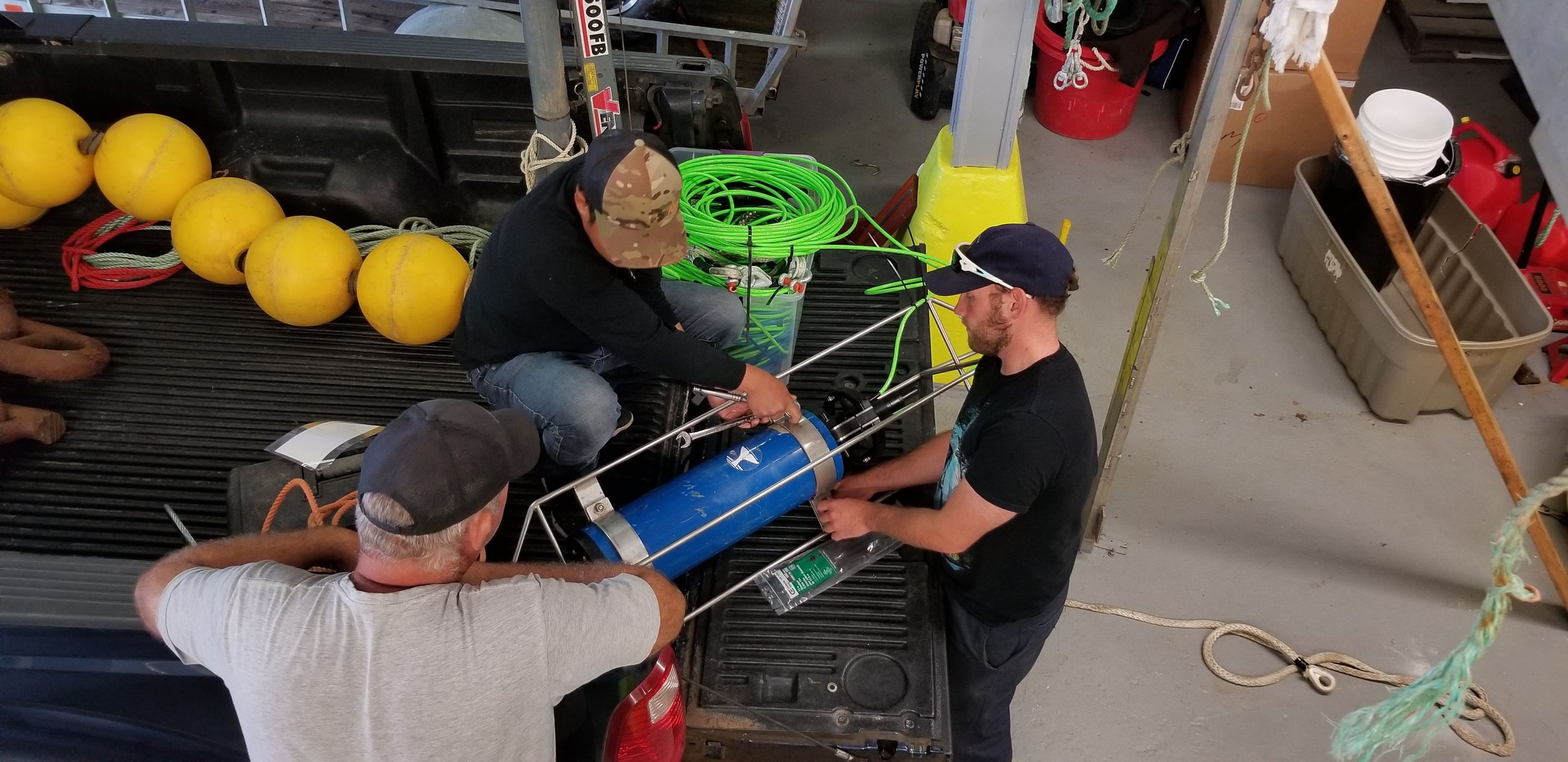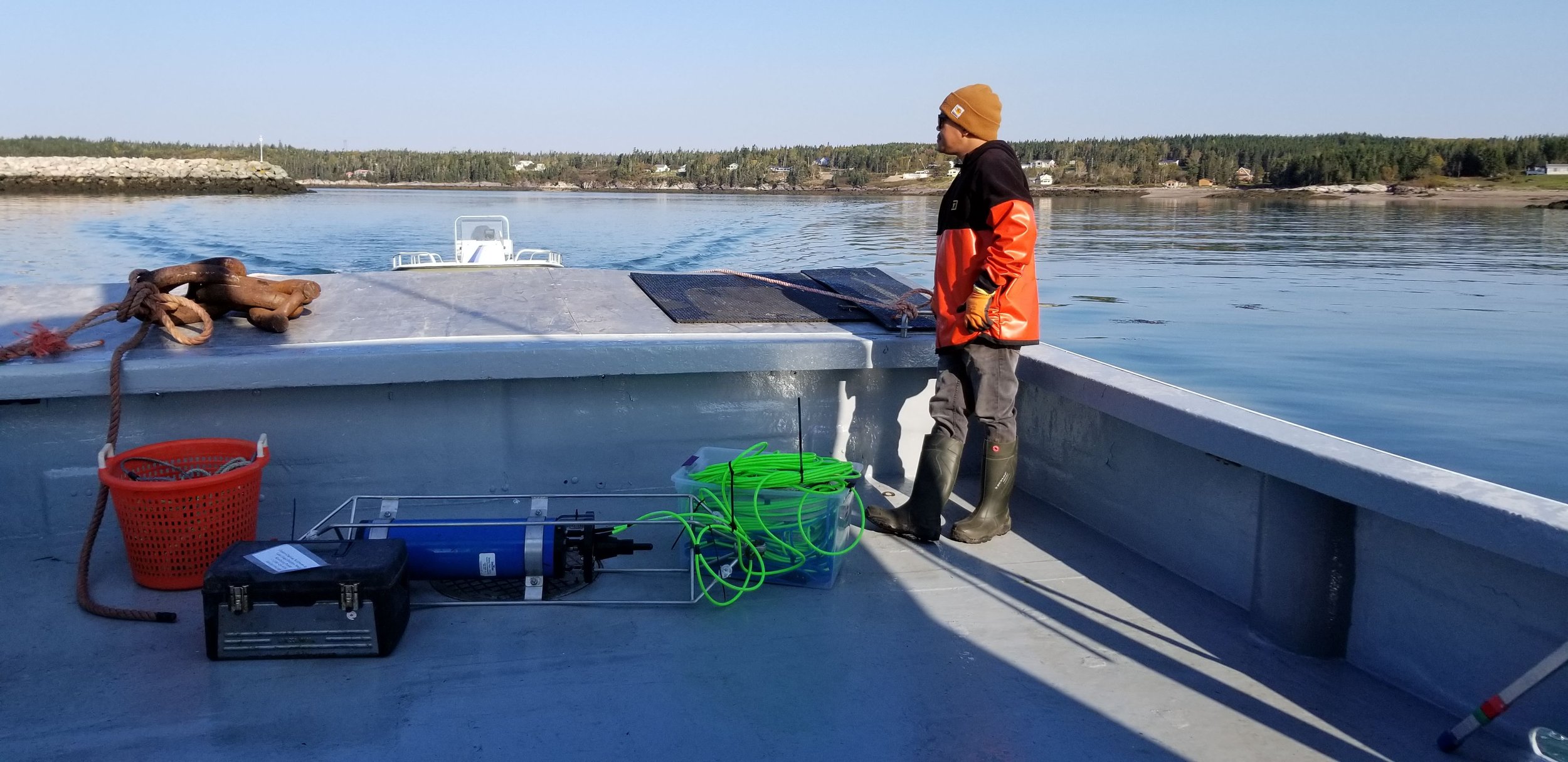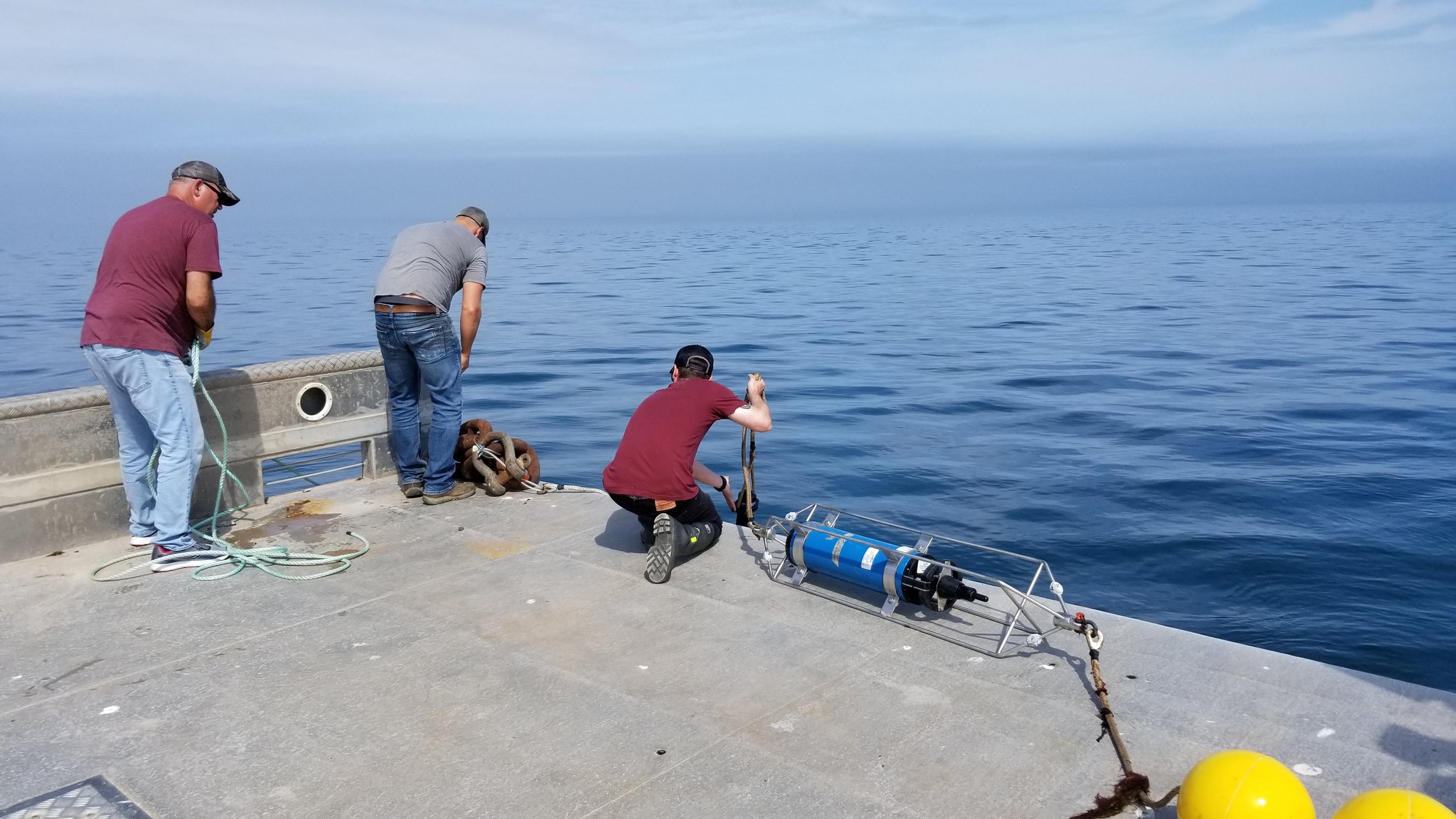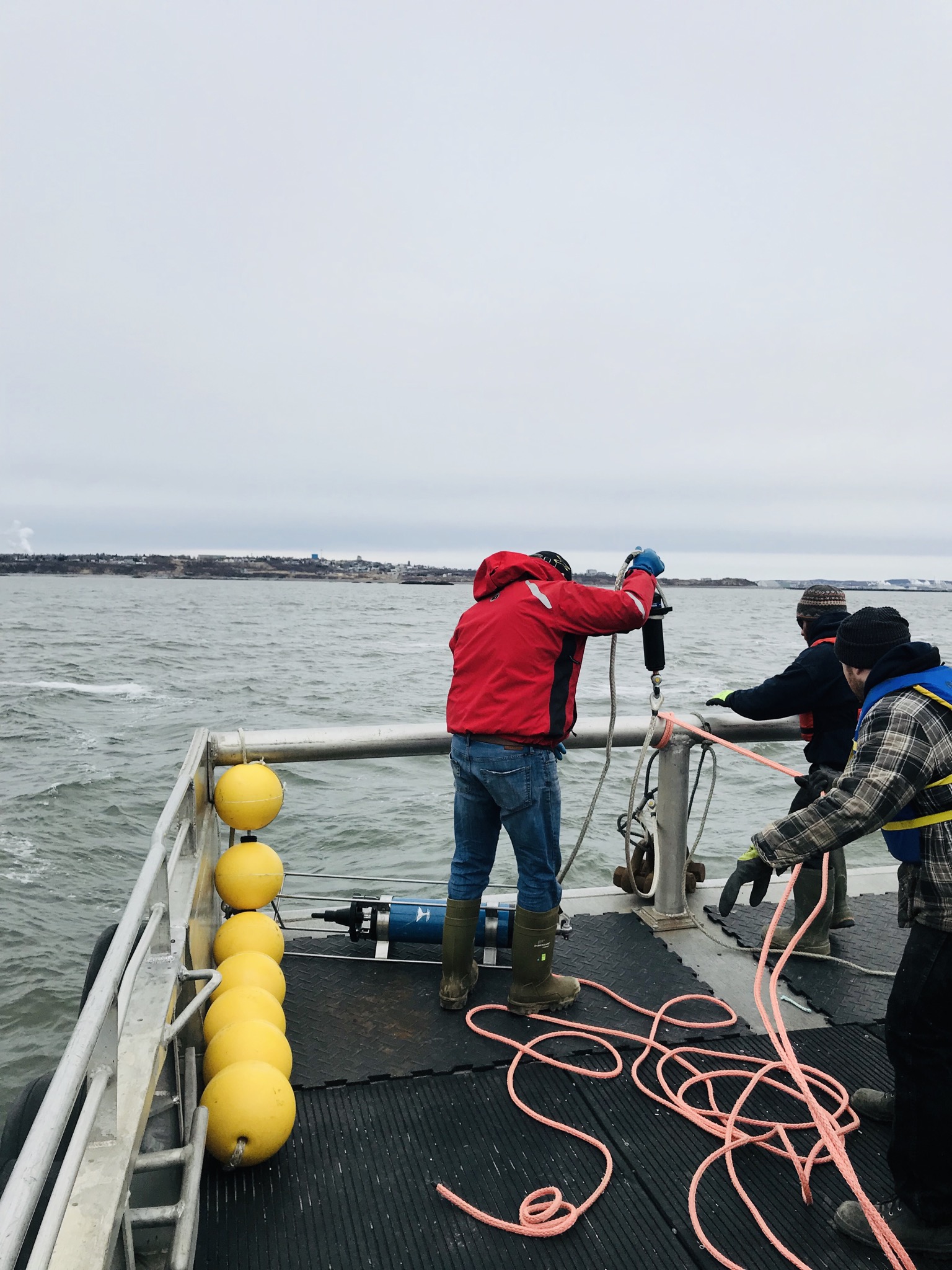Retrieving equipment from the Outer Bay of Fundy
UNDERWATER NOISE
Since 2015, ECW has worked with Dr. Jack Terhune of the University of New Brunswick to understand the impact of underwater noise on the Outer Bay of Fundy, an area which includes the critical habitat ‘Grand Manan Basin’ for the endangered North Atlantic Right Whale (Eubalaena glacialis), as well as being used by numerous other marine mammal species. Hydrophones (underwater microphones) are used to passively record sound under water for about a month at a time at various places in the Bay. This passive acoustic monitoring can help us better understand marine mammals and how they might be affected by anthropogenic noise.
Publications:
Temporal trends in the acoustic occurrence of baleen whales in the Bay of Fundy, Canada: Observations from passive acoustic monitoring (2025) [contact us for the full document]
Reports:
The Coastal Soundscape of the Outer Bay of Fundy (2016)
Understanding the extent and effects of shipping noise underwater
Recent monitoring has focused on researching the impact of shipping, tankers, cruise ships, and other vessels on marine mammals in the Outer Bay of Fundy, and to begin to understand how noise at different frequencies dissipates throughout the Bay. This was done by recording underwater noise at various sites, including: Port Saint John, Grand Manan Island, and off Point Lepreau. Our most recent site lies directly beside the shipping lane for vessels leaving Port Saint John.
To understand the extent of the noise, we created models which take into account all the parts of the environment in the Bay of Fundy that could affect the way sound travels. For example, the type of sediment on the bottom, or the properties of the water (temperature or salt content) can affect the way sound bounces and carries. This model, combined with real data from our recordings of how loud ships can be, can help us understand whether marine mammals like the endangered North Atlantic right whales have difficulty communicating with one another while ships travel to and from Port Saint John.
Hydrophone used to monitor the soundscape of the Bay of Fundy
Our equipment also records marine mammal calls!
We are currently in the process of analyzing our data from 2015 through 2022 to determine which species of marine mammals were present in the bay at different times throughout the year. Passively monitoring for marine mammals at different sites in the bay helps us understand their seasonal occurrence and distribution, which is critical to understanding when and where they might be at most risk from anthropogenic activities like rope-intensive fishing or noisy boat traffic. These recordings might also expand our knowledge of the vocal repertoires of the various mammal species, and if there are any calling patterns exhibited during the summer feeding months. Having a better understanding of species occurrence, distribution and acoustic behaviour will provide valuable insight into the ecology of marine mammal species that frequent the Bay of Fundy.
Here are some marine mammal calls that were recorded during our monitoring:
Note: fin whale and sei whale calls are low pitch. The recordings have been processed slightly so we may hear them, but not all speakers have the capability to produce the sounds. If you’re having trouble hearing them, try switching to headphones.
Below is a spectrogram (a visual representation of sound) of a fin whale (B. physalus) and a North Atlantic right whale (E. glacialis). The pulsed notes occurring at regular intervals around 20 Hz are produced by a fin whale, and the higher frequency, broadband pulses and upcalls are produced by a right whale. This was recorded near Grand Manan.
Did you catch our social media campaign which showcases some of the whale calls that we’ve recorded in the Bay of Fundy alongside footage from UNB researcher Gina Lonati? Here’s a taste. Find the rest on our social media accounts!
The following audio was recorded near Grand Manan, NB, and the drone footage was captured in the Bay of Fundy by researcher Gina Lonati under DFO permit: Section 38 License #360624. Note: These vocalizations are not associated with the behaviours captured in the drone footage.
ECW would like to thank Environment and Climate Change Canada, Department of Fisheries and Oceans, New Brunswick Department of Environment and Local Government, and New Brunswick Department of Agriculture, Aquaculture, and Fisheries for support for this project.









